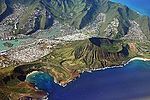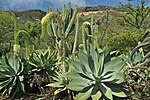Holy Trinity Catholic Church (Honolulu)
Buildings and structures in HonoluluHawaii building and structure stubsHonolulu stubsRoman Catholic Diocese of HonoluluRoman Catholic churches in Hawaii ... and 2 more
United States Roman Catholic church stubsWestern United States church stubs

Holy Trinity is a Roman Catholic church located in Honolulu, Hawaiʻi. Holy Trinity Church is located in the East Honolulu neighborhood of Kuliʻouʻou on the island of Oʻahu, at 5919 Kalanianaole Highway (Route 72), 21°16′59″N 157°43′45″W. The church serves the communities of Niu Valley, Kuliʻouʻou, and Hawaiʻi Kai. It falls under the jurisdiction of the Diocese of Honolulu and the bishop of Honolulu.
Excerpt from the Wikipedia article Holy Trinity Catholic Church (Honolulu) (License: CC BY-SA 3.0, Authors, Images).Holy Trinity Catholic Church (Honolulu)
Kalaniana’ole Highway, East Honolulu Niu Valley
Geographical coordinates (GPS) Address Nearby Places Show on map
Geographical coordinates (GPS)
| Latitude | Longitude |
|---|---|
| N 21.283055555556 ° | E -157.72916666667 ° |
Address
Kalaniana’ole Highway 5905
96821 East Honolulu, Niu Valley
Hawaii, United States
Open on Google Maps






